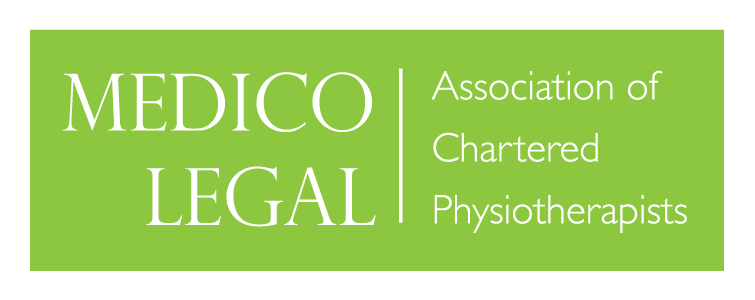If you’re thinking of taking up exercise for the first time in a while and getting back into shape, remember it’s important to do so in a safe and structured fashion.
So to help answer some common questions and to point you in the right direction, here we interview our Clinical Director and keep fit expert, Kevin Huffington to gain his thoughts on where to get started.
Question: So I’m 40ish, carrying a bit too much weight and if I’m honest a bit of a couch potato! I used to love taking part in all kinds of sports, but for the last 10 years demands of life and work have meant I’ve barely taken any exercise at all. Is it too late for me?
Kevin: It’s never too late to get going again, but it does get a bit harder as you get older. If you haven’t exercised for many years you definitely have to build up your activity levels in a controlled manner. Your muscles will have lost muscle mass, turning a little fatty and therefore losing strength, stability and efficiency. Your muscles will have also got shorter and therefore tighter over the years and with that little bit of extra weight you’re carrying, your body is having to work a little harder, which can affect your exercise form and tolerance. All these factors can make you prone to injury, which can slow your progress.
Question: I would love to get back into exercise and shed a few pounds, but where do I start?
Kevin: Shedding a few pounds is good for you now and for your health in the future. I would say the best way to get going is to start slowly and at a low level. Don’t put yourself off by over committing with your exercise, and keep your expectations low. You have to try and enjoy it and then you’re much more likely to stick with it.
I would recommend starting with something like 3 x 20 minute fast walks a week, getting your heart rate up and getting your body systems used to the new regime. Typically you know if you are working at the right sort of levels if you get short of breath, but not too much out of breath.
And then remember to do a bit of static stretching at the end. As your muscles start to get going again they tire and produce waste products post exercise, which can create DOMS (delayed onset of muscle soreness). Some stretching and a hot bath may help. DOMS eases post exercise the more regularly you exercise and as your body gets used to exercising again.
If you don’t stretch post exercise you may allow your muscles to tighten to a point that you may injure yourself.
Question: Does it need to be expensive – do I need to join a gym/buy some swanky trainers?
Kevin: No! The only cost to you would be a decent pair of trainers and some cheap shorts, jogging bottoms, a vest/t shirt and a bit of your time! You really don’t need to join a gym or pay out anything significant, certainly in these early days.
Question: Thinking of gradually building up my exercise, how do I structure an exercise programme/set goals?
Kevin: Start slowly and set your goals low so that you can achieve them relatively easily. You are looking to gradually increase your exercise on a weekly basis, but you don’t have to. Just getting out is good! But maybe increase the distance you are walking or the speed that you walk at each week. My advice is to set out what you want to do before you do it.
If you do want to increase activity, once you have fast walked for 3 weeks look at incorporating a jog.
So consider those 20 minute sessions again, but this time introduce some jogging. For example: fast walk for 5 minutes, then jog for 5 minutes on the flat, x 2 = 20 minutes.
I would also recommend you start with cardiovascular work, and then look to incorporate some strengthening work at home. There are many apps, Youtube posts online that can give you quick and effective 5 minute workouts and develop from there.
Question: I was never one for going to the gym as I preferred chasing a ball in team sports – but at my age can I still find some kind of team exercise activity?
Kevin: There are all sorts of team activities. 5 a side football is very popular, but is very high intensity, so I would recommend getting some of the activity above under your belt before going straight back into something like 5 a side football, squash or tennis for example.
You could join a local running or walking club, look out for outdoor group activity providers such as British Military Fitness, and/or join some of the many different fun exercise classes around. A lot of these activities are well run and usually cater for the exercise beginner.
Question: How frequently should I exercise/How much time do I need to set aside?
Kevin: The general advice is to try and exercise 2-3 times per week, and include at least 20 minutes of sustained exercise like fast walking, running, cross trainer, static bike etc. I think this is very doable. One tip is to do it straight after work, so there’s no time to get comfy at home!
Question: When’s the best time to exercise?
Kevin: It’s a very individual decision, some people enjoy first thing in the morning and others in the evening. You could fit a fast walk in at lunchtime. You should experiment and see which suits you the best. There is a thing called circadian rhythms, a sort of in built body clock, which suggests that we all have our optimum exercise times. For me, I do prefer early evenings, but I know people who prefer early mornings.
Question: How do I stay motivated towards achieving my goals?
Kevin: The main thing is to set your goals at an achievable level, so that it doesn’t make it too difficult to complete and takes some of the enjoyment out of it. Those first few weeks are the toughest!
If you keep your expectations realistic and are able to complete things successfully your confidence improves and you don’t go down the dread route. A lot of people fail to continue with their new exercise regime within the first month. It does take time for your body to get used to exercising again, but it does get easier. Those first few weeks can be daunting – so don’t give up.
Question: How do you monitor progress/what indicators should I look out for to suggest I’m making progress? Where should I aim to be fitness wise?
Kevin: I think the best way to monitor progress directly from exercise is your recovery time, how long it takes you to get back to your normal resting heart rate. Also, the reduced affect of DOMS is a good indicator as is your ability to tolerate and sustain a higher level of exercise.
Heart monitors can be useful and there are many apps that you can download to monitor your progress.
Where you should be aiming would be directed by what you want to achieve, such as weight loss, training for an event or decreasing the effects of a static lifestyle (such as blood pressure problems).
Question: Do you have any diet & lifestyle advice that would benefit my exercise performance?
Kevin: Non specifically, ‘everything in moderation’. I would say the benefits that come with exercise such as weight loss, increased muscle mass, better sleep etc do allow you to treat yourself with a bit of chocolate or that glass of wine now and again, without the impact it may have had previously when not exercising.
Alcohol is very high in calories, so if you can reduce intake then in most cases it will make a huge difference in a relatively short time frame.
Question: It’s a nice thought – but do I really need to get fitter & healthier?
Kevin: Working as a back treatment specialist and in the Occupational Health environment, as well as coming from a sports and fitness training background, my experience tells me that as a nation we are becoming much more sedentary.
Whether it be driving, sat at a desk, stood on a production line or watching TV, the static nature of what we do now is having a significant and detrimental effect on our health & wellbeing as a nation.
The negatives include a rise in musculoskeletal issues, such as low back, neck and shoulder pain, and dangers to our general health including heart conditions and diabetes.
The consequences of all this are huge. We have to start thinking now in our 30’s and 40’s about our health and wellbeing in our 70’s and 80’s. We are all living longer and the quality of that life very much depends on your lifestyle now.
Question: Once I’m up and running – would you advise some kind of ‘maintenance’ programme where I seek help to keep those aches and pains at bay?
Kevin: Yes! A regular review with a physiotherapist is good, and a 2 or 4 weekly sports massage can be useful for injury prevention, especially when you increase your goals and activity levels.
Question: Do you have any further advice on getting fit & staying fit?
Kevin: The main things are get on to it, be pro-active and remember there’s no time like the present. Set your goals and expectations low and try and enjoy it. And keep it going!
And finally, before starting any new exercise programme, I would highly recommend you speak to your GP or a qualified health professional, such as a physiotherapist.
To get your new fitness regime off to a flying start, and for lots of advice on doing it safely and successfully, please call 0800 6444 201 to book an appointment with one of the specialist clinicians at Central Health
Kevin Huffington, Clinical Director at Central Health was being interviewed by the Central Health Communications team. All advice given is intended as a guide only and if you are considering taking up exercise, you should speak to your GP or a qualified health professional before doing so.






